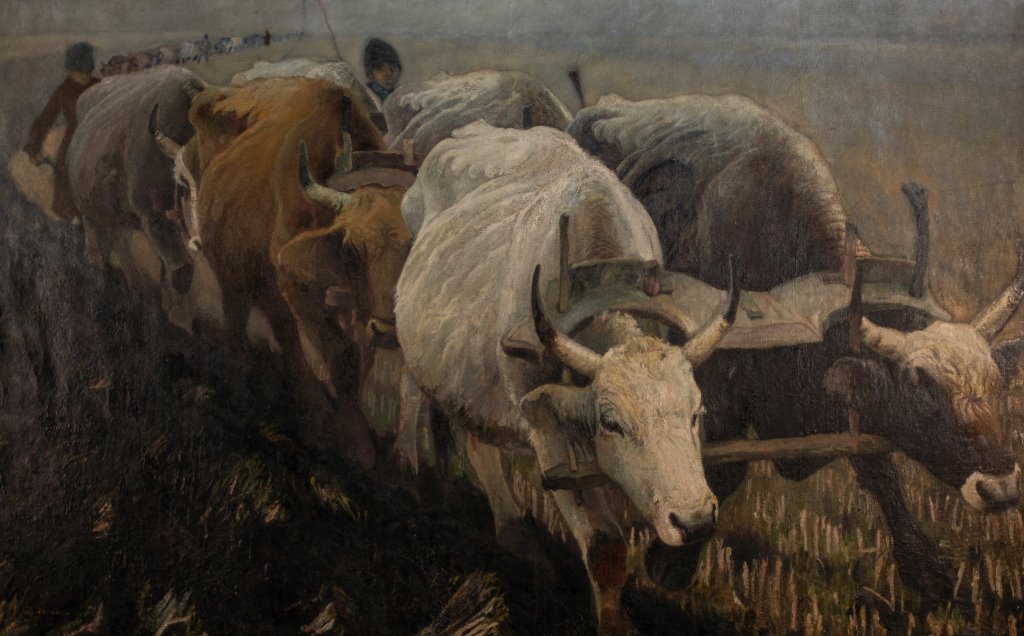
The main theme of the picture is ploughing with oxen. The composition of the image is conceived diagonally. In the foreground, three pairs of oxen are laboriously pulling a plough. Behind them you can see two figures of peasants in caps, one of whom is driving the oxen with a whip and the other steering a ploughing implement. Beyond the bend, in the foggy distance, you can see the outlines of following ox teams with ploughs, which form a long procession. The black color of the ploughed land in the left corner contrasts with the light color of the stubble. The animals wear a traditional harness for draft cattle called a yoke over their necks. The double yoke, that is, for a pair of animals, is visible in the foreground. The upper part is decorated with a geometric ornament typical of the Hutsul region. There are vertical sticks protruding from the sides of the yoke, which are called zanoses in Polish. Their purpose is to adhere to the animal’s neck in the yoke.
The oxen have narrow muzzles, large ears and saber-shaped white horns with black tips. The first pair consists of white and dark brown oxen. The following animals are light brown and white. The artist showed cattle in close-up, faithfully reflecting their anatomical structure. Using impasto-applied paint, Jarocki shows chiaroscuro on the bodies of the animals, lending plasticity especially to their heads. Jarocki’s popular ploughing motif became an opportunity to show the beauty and strength of draft oxen, overshadowing man. The thick linen weave of the painting support, with a distinct convexity of the applied paints, gives the painting a three-dimensional impression.
The painting “Ploughing with Oxen” was reproduced on postcards in the 1930s (by the “Galerja Polska” publishing house in Krakow). Władysław Jarocki was an artist who expressed the cult of the earth and nature in his art. To look for inspiration, he traveled with Fryderyk Pautsch and Kazimierz Sichulski to the Hutsul region, Podolia and Ukraine. He painted landscapes, portraits and genre scenes. His paintings were populated by Hutsul peasants, Podhale highlanders, Kashubian fishermen, and Ruthenians from the Zaleszczyki area.
Time and place of creation: 1920s–1930s, MAŁOPOLSKIE (voivodeship) / Kraków (city with county rights)
Author: Hanna Ignatowicz, Curator, National Museum of Agriculture and Agri-Food Industry in Szreniawa, Poland
